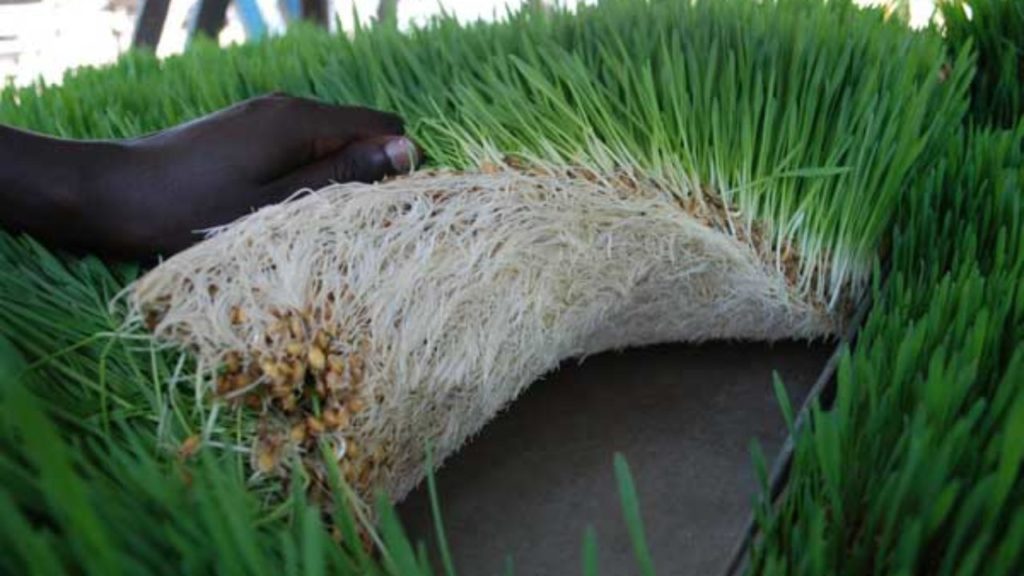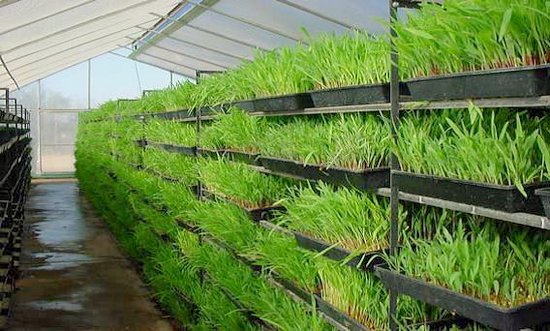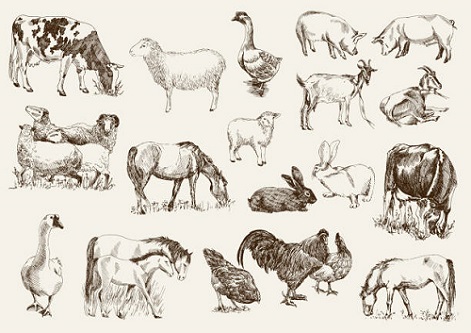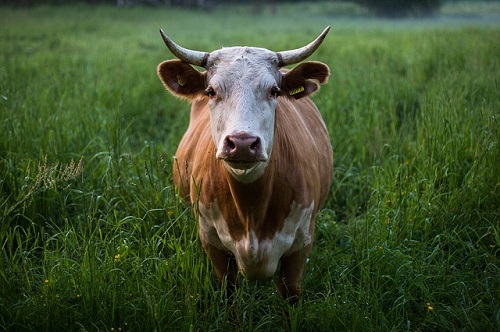What is Hydroponic Fodder?
Hydroponic fodder is animal feed grown from seeds without soil, and with little water. A week after the seeds have sprouted, the nutritious seedlings will be up to 30 cm tall. They can be produced every day of the year, even in the dry season. Reduced availability of grazing land and scarcity of water to cultivate fodder makes it hard to produce green fodder throughout the year. Hence, one can take advantage of hydroponic fodder.

How to Grow Hydroponic Fodder?
- Hydroponic fodder grows best in indirect sunlight, so you need to build a shed, or you can use a part of the livestock Leave some open space between the roof and the side walls to allow ventilation.
- Hydroponic fodder is grown on trays of about half a meter by 1 meter which you can carry easily. You can plant 1 kilogram of maize seed on a tray of this size. The tray should be strong enough to hold the weight of the fodder. Plastic trays are the best because metal rusts easily. Make holes in the trays to drain away excess water. Inside the shed, build a bamboo rack to hold the They should slope slightly to drain away the water.
- Remove broken or unhealthy seeds that will not grow properly. Seeds that have been threshed by hand germinate better. You can use maize, wheat, and pulses, but not pearl millet or sorghum because the sprouted leaves contain poisons.
- Add a bucket of clean, lukewarm water into a tub with the seeds. Remove seeds that float because they will not germinate. To avoid fungus, add half a handful of salt and soak the seeds for around 12 hours. Drain the water, then wash the seeds with clean water then put them in a burlap bag to sprout. Remove the sprouted seeds from the gunny bags and spread them evenly over the trays. Place the trays on the rack.
- Every day, water the sprouted seeds, every 2 hours if it is hot and every 4 hours if it is cold. Keep the shed clean and dry so that molds do not grow. Do not lift the sprouted seeds from the tray before harvesting, or it will damage the fodder.
Within a week, 1 kilogram of maize seed produces about 8 kilograms of fodder. Remove the tray and cut the slab of fodder into pieces. Give the animals half hydroponic fodder and half-dry fodder. If you want to read more about Hydroponic Gardening, visit this website farmstocking.



Nice, thanks bro, omg naija mi
Very educating livestock. I got value because I saw some amt of guinea corn lying fallow and decided that I will use it for fodder, now I learnt that their leaves contain poison. Thanks once again